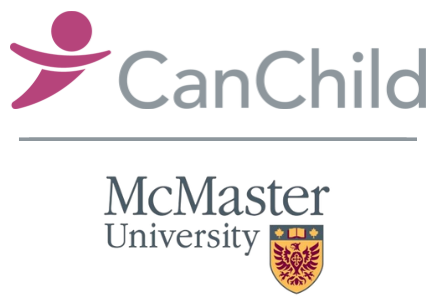In Brief © Tram Nguyen, Matt Freeman, Jan Willem Gorter, 2013
This project was initiated and funded by the Ministry for Child and Youth Services (MCYS) in Ontario. The results of our synthesis have been used for the ministry’s development of a Youth Policy Framework, named stepping stones. 1-4
Why research this topic?
- One out of five children, adolescents, and young adults has a disability (e.g., physical, language, developmental, intellectual, and/or mental health disorder).
- Most children with developmental conditions survive to adulthood.
- To improve adult outcomes there is a need to understand their developmental trajectories. The existing knowledge needed to be synthesized to inform future steps.
How did we approach this knowledge gap?
- We synthesized existing knowledge about the developmental trajectories of youth with disabilities, ages 12 – 25 years.
- At the start of the project we envisioned an ‘inclusive’ developmental framework that is applicable for all youth, including those with special needs.
- Interactional, life course perspectives and definitions of development and disability to ensure that all factors, processes, relationships and contexts were addressed guided our research team.
How was the literature review done?
- This knowledge synthesis was conducted at a synopsis level rather than a systematic review.
- Three sources of evidence were triangulated in order to inform results: (a) Clinical & Research Experts, (b) Youth, Parent and Community Experts, and (c) Research Evidence.
- The literature review was to be targeted at articles examining youth with childhood onset, chronic, lifelong conditions/impairments and developmental trajectories or prospective longitudinal studies. Databases including: OVID, Medline, Psych INFO and ERIC.
- A total of 136 articles were reviewed, 107 of which met the following inclusion and exclusion criteria defined before the analysis began. A consultant to the research team merged the review template from the 107 articles to develop a strengths-based conceptual framework.
What was found?
- A person’s condition is only one factor that impacts the developmental process of transitioning into adulthood.
- Developmental transitions are characterized by the complexity of the numerous interactions between personal and environmental factors.
- Evidence to support a positive approach to youth development with a goal of full participation of all youth in inclusive communities.
What were our recommendations for researchers?
- Develop large longitudinal studies about development on all youth with disabilities.
- Study the person-environment interactions and the processes at work to provide youth with disabilities with the experiences, opportunities and relationships needed for positive development.
- Merge the research about the developmental trajectories of ‘typical’ youth with that of disabled youth, as many of the key constructs are the same, but there is more complexity for youth with disabilities.
- Include youth with disabilities as participants in studies or active members of a research team, so their voice and perspective is always represented.
What were our recommendations for policy makers?
- Stimulate collaboration to provide person-centred planning at important transition points.
- Provide useful and relevant information for youth and families to help them make informed decisions for the future.
- Focus on participation, citizenship, community engagement, and other outcomes that are meaningful to youth with disabilities and their families.
- Evaluate services and models that promote positive youth development and transitions.
Where to go from here?
- Translate knowledge to families, educators, practitioners, and youth with disabilities.
- Ensure that adequate resources and supports are available to youth with disabilities and their families to maximize participation and inclusion at the community level.
For more information, please contact Tram Nguyen at canchild@mcmaster.ca
References
1. Gorter J.W., Stewart, D., Woodbury Smith, M., King, G., Wright, M., Nguyen, T., Freeman, M., & Swinton, M. (in press). Pathways toward positive psychosocial outcomes and mental health for youth with disabilities: A knowledge synthesis of information on developmental trajectories. Canadian Journal of Community Mental Health (CJCMH). (in press)
2. Stewart, D., Gorter, J.W., & Freeman, M. (2013). Transitions to adulthood for youth with disabilities: Emerging themes for practice and research. The Prevention Researcher, 20 (2), 3-6. (link to article: http://www.tpronline.org/article.cfm/Transitions_to_Adulthood_for_Youth_with_Disabilities)
3. Gorter J.W., Stewart, D., Woodbury-Smith, M., Freeman, M., Nguyen, T., Wright, M., Campbell, W., Dematteo, C., Missiuna, C., & Rosenbaum, P. (2011). Developmental trajectories of youth with disabilities (age 12-25 years of age): A knowledge synthesis. Ontario Ministry of Children and Youth Services.
4. Stepping stones page 26
